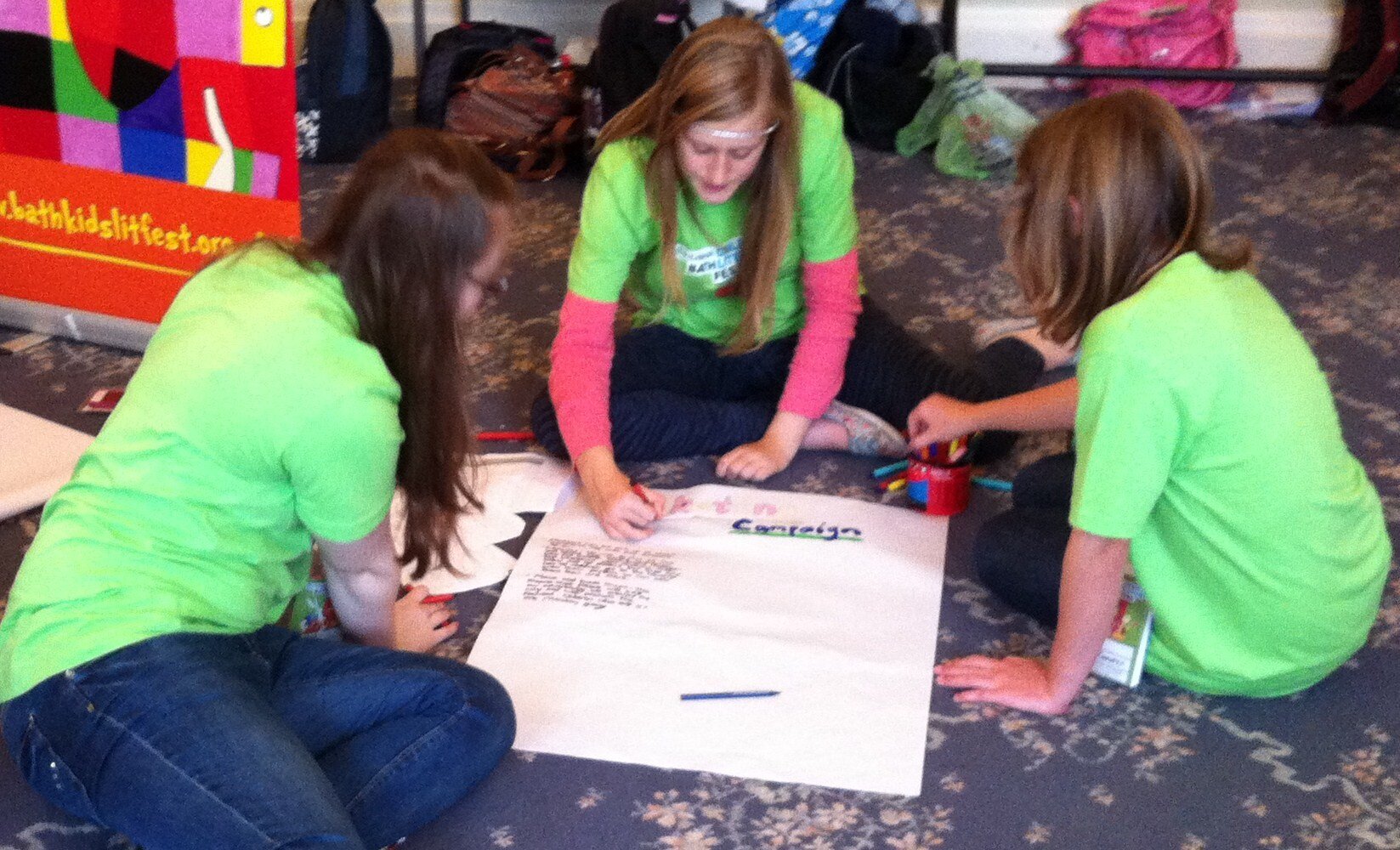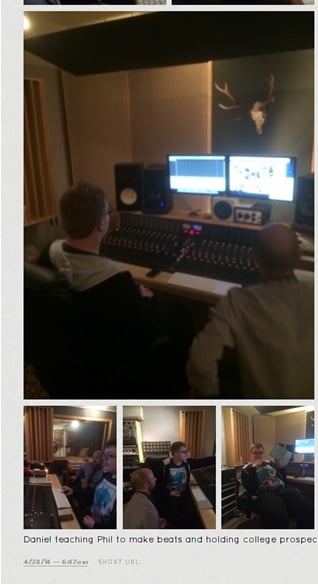
How centres can adapt Arts Award for different projects and groups
BY: Guest Writer
06 Apr 2015
Bath Festivals is the charitable organisation responsible for the Bath International Music Festival, the Independent Bath Literature Festival and the Telegraph Bath Children’s Literature Festival. Our Learning & Participation programme offers children, young people and adults the best opportunities to engage with music and literature as part of everyday life, enhancing people’s lives, and making a positive contribution to the cultural life of our communities. We offer Discover, Explore, Bronze and Silver Arts Awards to young people involved in our projects. This includes our Young Curators Groups and young people involved in our music project, Building Bridges.
We are an Arts Award Supporter and offer free and discounted tickets to young people working towards their Arts Awards to events at our three festivals. We also use our links with other local arts providers and creative businesses to provide opportunities for young people.
In this blog we want to share how we approached delivering Bronze Arts Award with two different groups we were working with, in our Young Curators and Building Bridges projects, to highlight how the framework can be used to meet the needs of varying projects and young people’s needs.
Young Curators Programme
Project outline
The aim of the programme is to involve young people in all aspects of the curation and production of the Bath Children’s Literature Festival and at the same time help them achieve their Bronze Arts Award. Students with an interest in literature, reading and writing at a local secondary school were invited to apply for the programme.
We had 10 students from Years 7 to 9 taking part. They met once a fortnight after school.
Planning
We spent time supporting the participants’ individual journeys, helping them become aware of the arts activities they already took part in, and how their participation in those could be used in their Arts Award. We planned activities for them as part of the Children’s Literature Festival and some of them used these as elements of Arts Award.
For example for Part A (explore the arts as a participant), the group took part in a writing workshop that was happening as part of the festival. For Part B (explore the arts as an audience member) some young people used the experience of attending events at the festival whilst others visited a gallery or went to a concert and we supported them to collect the evidence they needed for this.
Evidencing
The Young Curators were confident communicators in the written word so took a more traditional approach to this and had sketch books which they filled with evidence. They took photos, made notes, did drawings, stuck in postcards and tickets from events they visited. They also wrote pieces for our website which they included in their portfolios.
- Top tip. Constantly collecting evidence for Arts Award as you go is key to making the process run smoothly. Make sure you have the ability to collect evidence in different ways: audio recordings, video, drawing, typing memos on a phone or using pen and paper. It’s also useful to have enough staff available to document as well as run sessions if your young people are unable to document themselves. Perhaps use a volunteer or workshop assistant.
Building Bridges
Project outline
The aim is to provide an opportunity for young people in challenging circumstances to engage with inspiring and high quality music making. Between five and 10 young people met once a week at their local Youth Hub to work with our Music Leader, working on writing their own songs as well as completing their Bronze Arts Award. Some of the young people in the group find school challenging and have disengaged with music there as they struggle to participate in that setting. All of the young people face isolation, whether this is cultural, financial or rural.
Planning
We planned all the activities for Arts Award into the project as a whole and provided all arts opportunities for the group as they had little access to the arts in their everyday lives.
Part A (explore the arts as a participant) and Part B (explore the arts as an audience member) were all undertaken as a group. The young people chose different musicians to research for Part C (arts inspiration), but they all completed this at the same time during one of their sessions. They then chose different skills to teach each other, so completed this during another session.
Evidencing
The young people had folders which they added photos and comments to, but they also created a lot of video evidence for most of the sections. Some of the young people have had negative experiences at school so it was important to differentiate collecting evidence for Arts Award from school work.
- Top tip. Plan around events happening in your area for Part B (explore the arts as an audience member). What events are you running which would be suitable for young people to attend? Find out which arts organisations are Arts Award Supporters and use them to help you.
Plan reflection into the project from the beginning
We have noticed that the most difficult thing for all the young people to do, no matter what their background and circumstances, is reflect on their experiences. This is a major part of success in Arts Award so it makes sense to plan ways of achieving this, and to plan evaluation and reflection into your project from the very beginning. Experience has shown that asking a young person to remember an activity and say what they thought about it, is a particular challenge, they really exist in the here and now, so it helps if you weave the reflection into the activity.
- Take photos of the session, then print out and ask the young people to place a scale of things they enjoyed most/ least. Create a line on the floor to do this, one end a big smiley face, one end a sad one. Use this as a prompt to unpack WHY they put the pictures where they did, perhaps compare the ones they liked with those they didn’t as a starting point for discussion. Film or record the evaluation session, or annotate and type up to include in the young people’s portfolios.
- Create areas in the room for like, dislike, not sure. Then talk about different parts of the session and ask the young people to stand in the area that reflects their feelings on that part of the session. Again use this as a starting point for a more in depth discussion, model answers if more support is needed.
- Top tip. When planning and using these exercises, remember that each young person needs to record their own reflection in their portfolios so everyone’s responses need to be collected for evidencing.
Related posts

BY: Guest Writer
BY: Guest Writer



Comments & Replies